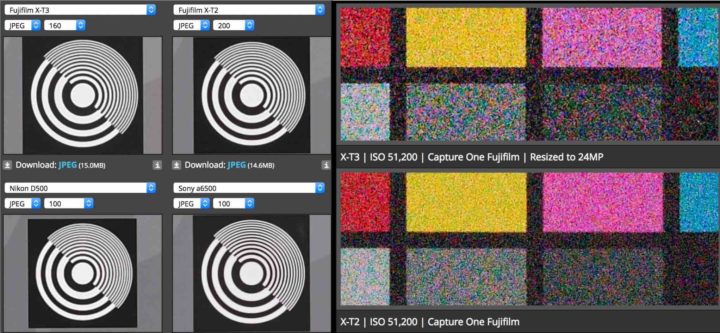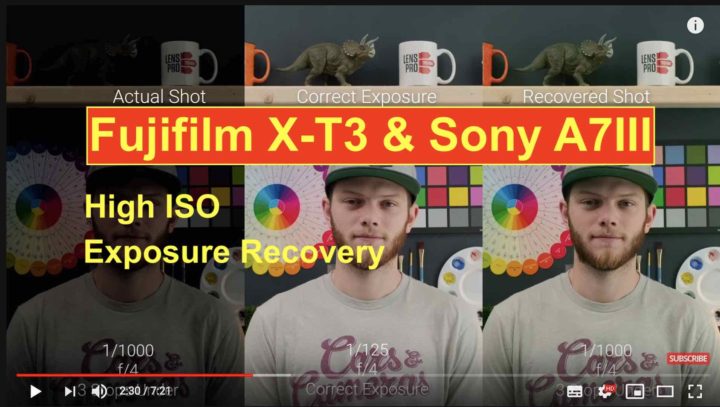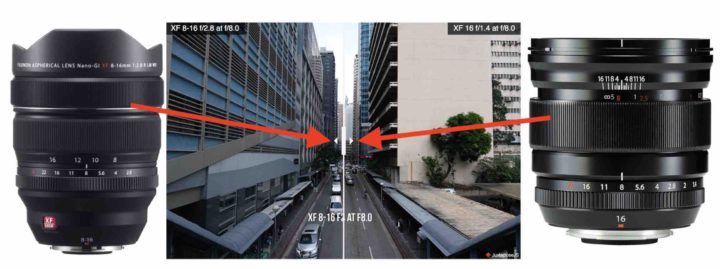
Fujifilm X-T3 Image Quality
DPReview is completing their full Fujifilm X-T3 review, and right now they anticipated their Fujifilm X-T3 image quality conclusions. They write:
- The X-T3 slightly lower base ISO (160) provides a small but measurable improvement over its predecessor
- The highest ISO settings fall behind the best of its peers
- Raw detail: X-T3 does well, relative to its peers, but with no sign of moiré
- Overall, the X-T3 is very competitive in terms of noise until its very highest ISOs
- JPEG color lives up to Fujifilm’s usual high standard
- The default sharpening seems to strike a good balance between emphasizing detail without going over-the-top
Regarding Adobe, and the difference they notice between X-T2 and X-T3 at ISO 25,600 and 51,200, they write:
- significant differences between the X-T2 and X-T3 at high ISOs. Read noise measurements suggest difference around 1/3 of a stop but visually the Adobe Camera Raw conversions look more like a whole stop
- A discussion with Adobe revealed that they’ve made some changes to “increase accuracy of shadow (near-zero) values in raw files,” which can give deeper blacks and more contrast in dark regions of the image. Even re-processing the X-T2 files using this revised processing still doesn’t fully account for the differences we’re seeing at very high ISOs
So they tried Capture One, and they write:
- With noise reduction minimized, the X-T3 still exhibits more noise than the X-T2. Not quite as dramatically as in ACR, but the difference is still there
Their explanation and conclusions are
- The most likely explanation we can think of for this discrepancy is a very slight increase in read noise as a result of running all the electronic components faster, to allow the faster sensor readout. At the highest ISOs even a tiny increase in read noise would be amplified many, many times.If this is the case then the slightly reduced high ISO performance is the price you pay for the camera’s increased speed. Whether this trade-off makes sense for you is likely to depend on how often you use ISO 25,600 and 51,200
Check out the full DPReview image quality comparison and conclusion in this post.
Fujifilm X-T3: BHphoto, AmazonUS, Adorama, Focuscamera
FujiRumors is everywhere: Facebook, RSS-feed, Instagram, Youtube and Twitter
News, Rumors and Community
Fujifilm X-T facebook group
Fujifilm X-T facebook page
DEALS
Fujifilm X-T3 + v. grip (save $130): BHphoto, AmazonUS, Adorama, Focuscamera
Fujifilm X-T3 + 18-55 + v. grip (save $130): BHphoto, AmazonUS, Adorama, Focuscamera



